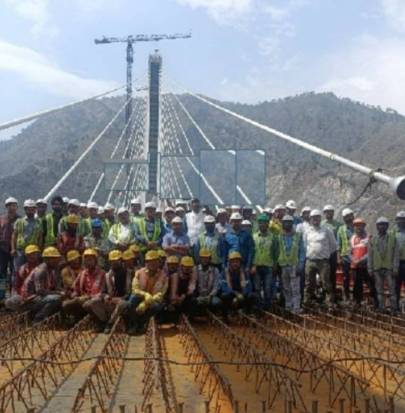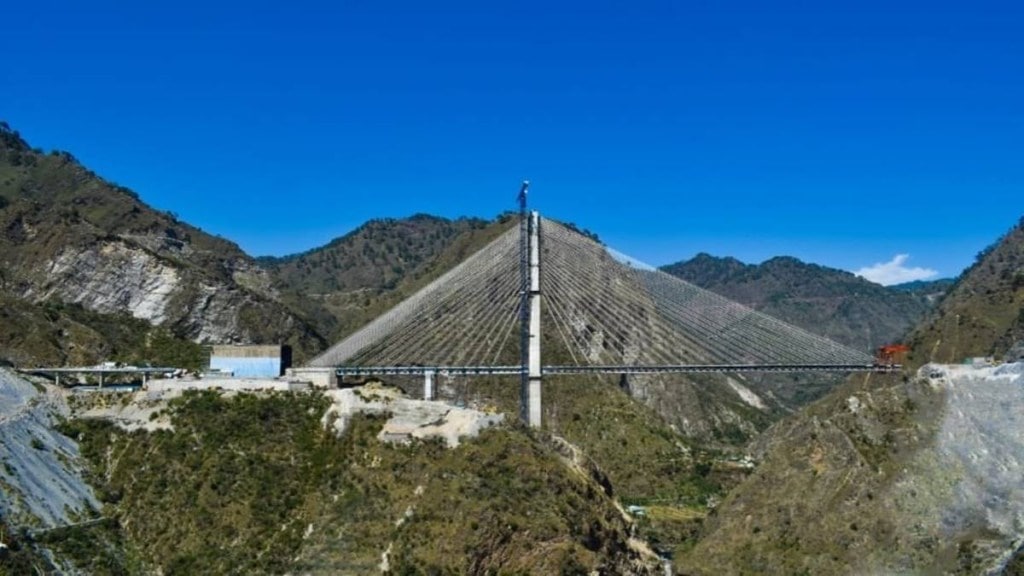Indian Railways has achieved another milestone despite difficult geographic conditions in the state of Jammu and Kashmir (J&K). All 96 cables on the first cable-stayed bridge of India, the Anji Khad bridge, have been fully installed in a record time of 11 months. The engineering marvel will connect Katra and Reasi in this northern state of the country.
It is constructed over the Anji river, a tributary of the Chenab river between Katra and Reasi. The total length of the structure is 473.25 metres and its height (from the river bed to the formation) is 196 metres.
Do you know?
Earlier, an arch bridge design was proposed for the Anji Khad bridge, similar to the Chenab Bridge arch design. However, it was rejected and a new cable-stayed design was approved. A panel led by an ex-railway board chairman has suggested that the site is not suitable for an arch bridge (concerns over the geological stability of the region).
At Anji Khad, Indian Railways, in October 2016, decided to build a cable-stayed bridge. The bridge will connect tunnel T2 (on the Katra side) and tunnel T3 (on the Reasi side). Reportedly, the cost of the project is around Rs 450 crore.

Another engineering marvel – Chenab Rail Bridge
The Chenab Rail Bridge is another engineering marvel of Indian Railways. A concrete and steel arch bridge between Kauri and Bakkal (and just 42 km from the main Reasi town in the Reasi district of the state), it is the world’s highest rail bridge.
Cable-stayed bridge explained:
A cable-stayed bridge is one which has one (or more) tower(s) from which cables support the bridge deck. The unique characteristic is the cables, which run directly from the tower to the deck. From a distance, it looks like a series of parallel lines.
In contrast, an arch bridge (shaped as a curved arch) is an engineering structure with abutments at each end. It works by transferring the weight of the bridge and its loads partially into a horizontal thrust tied by the abutments at either side.
Another kind of bridge is a suspension bridge, where the cables supporting the deck are suspended vertically from the main cable. This main cable is anchored at both ends of the bridge and runs between the towers.

